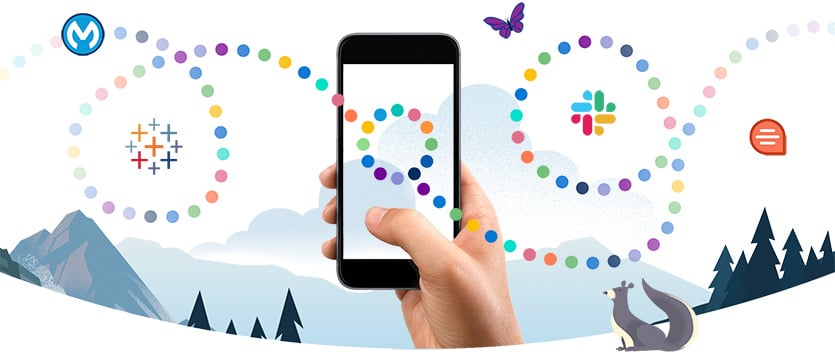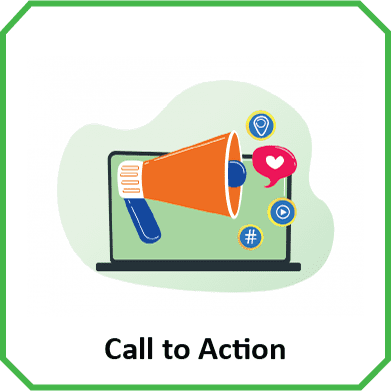Saas (Software as a Service) marketing campaigns play a crucial role in driving the growth and success of SaaS companies. A well-executed marketing campaign can significantly increase brand awareness, generate leads, and drive conversions. Below, you’ll find five examples of successful SaaS marketing campaigns and key insights that can be applied to your own marketing efforts.
What is a SaaS Marketing Campaign?
SaaS marketing refers to the strategies and activities undertaken by SaaS companies to promote their products or services to potential customers. It involves creating and implementing a comprehensive marketing plan specifically tailored to the unique needs and challenges of selling software as a service. It also encompasses various aspects such as market research, target audience identification, value proposition development, messaging, channel selection, and campaign execution.

Market research is a crucial first step in SaaS marketing campaigns. Companies need to understand their target audience, their pain points, and their preferences. This research helps in developing a value proposition that resonates with potential customers and differentiates the SaaS product from competitors. It also aids in identifying the most effective channels to reach the target audience.
Once the market research is complete, SaaS companies can move on to developing a comprehensive marketing plan. This plan outlines the goals, strategies, and tactics that will be employed to promote the SaaS product. It includes a detailed analysis of the target audience, the messaging that will be used to communicate the value proposition, and the channels that will be utilized to reach potential customers.
One of the key components of an effective SaaS marketing campaign is the value proposition. This is the unique selling point of the SaaS product, the reason why potential customers should choose it over competitors. The value proposition should be clear, concise, and compelling, highlighting the benefits that the SaaS product offers and how it solves the pain points of the target audience.
Messaging is another important aspect of SaaS marketing campaigns. The messaging should be tailored to the target audience and should effectively communicate the value proposition. It should be consistent across all marketing channels and should resonate with potential customers, evoking an emotional response and compelling them to take action.

Channel selection is also crucial in SaaS marketing campaigns. Different channels have different reach and effectiveness, and it is important to choose the ones that will most effectively reach the target audience. This could include a combination of digital channels such as social media, email marketing, content marketing, and search engine optimization, as well as traditional channels such as print advertising and events.
Once the marketing plan is in place, SaaS companies can execute their campaigns. This involves implementing the strategies and tactics outlined in the plan, monitoring their performance, and making adjustments as necessary. It is important to track key metrics such as customer acquisition cost, conversion rate, and customer lifetime value to measure the success of the campaigns and make data-driven decisions for optimization.
Effective SaaS marketing campaigns are instrumental in driving customer acquisition and revenue growth. They help SaaS companies differentiate themselves from competitors, build brand credibility, and establish a loyal customer base. By leveraging the right marketing strategies, SaaS companies can reach their target audience, effectively communicate their value proposition, and drive conversions.

Key Elements of Successful SaaS Marketing Campaigns
Now that we understand the significance of SaaS marketing campaigns, let's explore the key elements that contribute to their success.
Target Audience Identification
One of the critical factors in running a successful SaaS marketing campaign is clearly identifying your target audience. By understanding the pain points, needs, and preferences of your target audience, you can tailor your marketing message and channel selection to effectively reach and resonate with them.
Identifying your target audience involves conducting thorough market research and gathering data on your potential customers. This includes analyzing demographics, psychographics, and behavioral patterns. By delving deep into their preferences and interests, you can gain valuable insights into what motivates them and how to position your SaaS offering in a way that captures their attention.
Additionally, it's important to segment your target audience into smaller, more specific groups. This allows you to create personalized marketing campaigns that speak directly to each segment's unique needs and pain points. By doing so, you can increase the relevance and effectiveness of your marketing efforts.
Value Proposition and Messaging
A compelling value proposition is essential in capturing the attention of potential customers and standing out in a crowded market. Your value proposition should clearly communicate the unique value and benefits that your SaaS offering provides. Crafting a concise and compelling marketing message that effectively communicates this value proposition is crucial for campaign success.
When developing your value proposition, it's important to focus on the specific problems your SaaS solution solves for your target audience. Highlight the key features and functionalities that set your product apart from competitors and explain how these features directly address your audience's pain points.
In addition to the value proposition, your messaging should be consistent across all marketing channels and touchpoints. This ensures a cohesive brand experience and reinforces the unique selling points of your SaaS offering. By using persuasive language, storytelling techniques, and social proof, you can further enhance the impact of your messaging and compel potential customers to take action.
Channels and Tactics
Choosing the right marketing channels and tactics is key to reaching your target audience and achieving your campaign goals. This can involve a combination of digital marketing channels such as social media, email marketing, content marketing, SEO, and paid advertising. It's crucial to analyze your target audience's preferences and behavior to determine the most effective channels and tactics to utilize.
Take this as an example: if your target audience consists of tech-savvy professionals, leveraging social media platforms like LinkedIn and Twitter might be more effective in reaching them. On the other hand, if your audience is more likely to engage with long-form content, investing in content marketing through blog posts, whitepapers, and webinars could yield better results.
It's also important to consider the buyer's journey when selecting marketing channels and tactics. Different channels and tactics may be more suitable for attracting new leads, nurturing them through the consideration stage, or converting them into paying customers. By mapping out the buyer's journey and aligning your marketing efforts accordingly, you can maximize the impact of your campaigns.
You can't forget to regularly monitor and analyze the performance of your marketing campaigns. It's just crucial. It allows you to identify what's working and what's not, and make data-driven adjustments to optimize your campaigns for better results.
The success of SaaS marketing campaigns, as you will notice, relies on a combination of factors, including a deep understanding of the target audience, a compelling value proposition, and the strategic selection of marketing channels and tactics. By meticulously planning and executing each element, you can create impactful campaigns that drive awareness, engagement, and ultimately, conversions for your SaaS business.


-AK-148968-preview.png?width=842&height=310&name=1.01-1x1px-Embertribe-(Client-Services)-AK-148968-preview.png)








-1.jpg)






%20-%20500x500%20-%20SP%20-%2045.01.png)
%20-%20500x500%20-%20SP%20-%2049.01.png)
%20-%20500x500%20-%20SP%20-%2057.01.png)


.png)